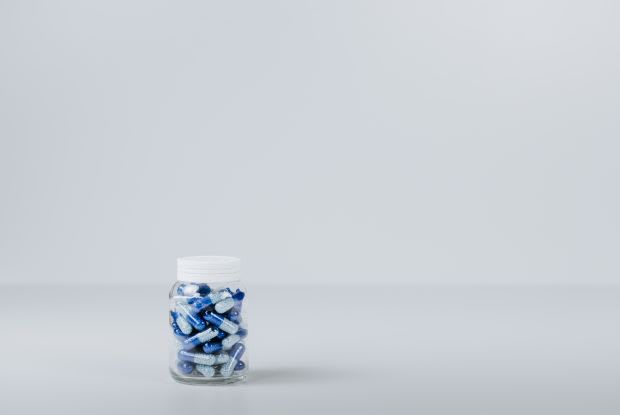Table of Contents
II. What are the functions of Xifaxan?
III. Understanding E. Coli Bacteria
IV. How quickly does Xifaxan work?
What is Xifaxan?
Xifaxan is an antibiotic that contains an active ingredient called rifaximin. This antibiotic is designed to fight bacterial infections in the intestines. Unlike other antibiotics which are absorbed into the bloodstream, Xifaxan stays within the intestinal tract to reduce bacterial overgrowth. Xifaxan 550 mg may be used to treat symptoms of traveler’s diarrhea in adults and children who are at least 12 years old.
Before taking Xifaxan, it is important to know whether you are allergic to rifaximin, rifapentine, rifampin, or rifabutin. An allergic reaction can cause swelling in your face, lips, tongue, and throat. You should also ask your doctor before taking Xifaxan if you have a history of liver disease or if you currently have diarrhea with a fever or bloody diarrhea. [1]
Xifaxan should be taken exactly as your doctor has directed. Generally, Xifaxan can be taken with or without food. Even if your symptoms quickly improve after taking this antibiotic, you should continue using this medicine for the entire prescribed treatment period. If you skip doses or stop treatment early, symptoms can return, and the infection may become resistant to the medication. Xifaxan (rifaximin) is also approved to treat irritable bowel syndrome with diarrhea and hepatic encephalopathy. Read on to learn more about the functions and benefits of Xifaxan.
Traveler’s diarrhea gets its name from being a common condition abroad. Some countries may be more likely to have contaminated water and food, which increases the risk of bacterial infections. The good news is that this condition does not usually cause serious complications. Traveler’s diarrhea may cause loose stools and abdominal cramps, but these symptoms typically resolve on their own within a few days. If you experience diarrhea, nausea, vomiting, fever, and dehydration for longer than two days, you may need to see a doctor about prescribing Xifaxan. Rifaximin is often prescribed for a period of three days for traveler’s diarrhea. [2] However, every patient is different, so follow your doctor’s advice. Irritable bowel syndrome (IBS) is a large intestine disorder that often causes bloating, gas, and a combination of diarrhea and constipation. While IBS is not always severe, it is a chronic condition that requires long-term treatment to manage symptoms. Although symptoms of this condition may be mild, you should see a doctor if you experience weight loss, diarrhea during the night, rectal bleeding, difficulty swallowing, and unexplained vomiting. Some cases of IBS predominantly cause symptoms of diarrhea (IBS-D). If you have IBS-D, your doctor may prescribe Xifaxan for a two-week treatment period. Studies show that treating IBS-D with Xifaxan is highly effective, and patients experienced symptom relief for at least 10 weeks following treatment. [2] Xifaxan generic is also available for purchase through RxConnected. When the digestive system breaks down the food you eat, several types of bacteria may interact with the food and create toxins as a by-product. In people with liver disease, these toxins remain in the body and can travel to the brain, diminishing brain function. This condition is known as hepatic encephalopathy (HE), and people with this condition may seem confused or disoriented. Other symptoms include personality changes, depression, abnormal behavior, and intellectual impairment. Generally, Xifaxan is taken twice a day for three days in patients with hepatic encephalopathy. By reducing the number of harmful bacteria in the gut, fewer toxins are produced when you digest food, which lowers your overall toxicity levels and improves symptoms. Patients with hepatic encephalopathy often require treatment for liver disease because the liver plays an important role in filtering toxins from the blood. [3] E. coli is short for Escherichia coli, a common type of bacteria that is mostly harmless. The E. coli bacteria thrives in the body’s intestines and does not usually cause health problems because only certain are harmful to humans These strains can infect you through contaminated food and water, causing severe symptoms such as bloody diarrhea, vomiting, and stomach cramps. The most harmful strain of E. coli is known as the Shiga toxin-producing E. coli (STEC). This strain is dangerous because it can cause a condition called hemolytic uremic syndrome (HUS). This condition can cause abdominal cramps and bloody stools. Hemolytic uremic syndrome is a potentially life-threatening complication of a STEC infection that can lead to kidney failure and death. Young children and the elderly are more at risk of developing HUS from a STEC infection. [4] Symptoms of an E. coli infection typically appear three to four days after exposure. Bacterial infections are spread through person-to-person contact or contaminated food and water, so good hygiene and food preparation practices can reduce transmission. It is difficult to completely avoid infection, but antibiotics like Xifaxan are available if an infection occurs. For traveler’s diarrhea, Xifaxan typically begins to improve symptoms within 24 to 48 hours after you start taking the antibiotic. For irritable bowel syndrome with diarrhea, studies show that rifaximin provided adequate symptom relief after one month, compared to a placebo. In this same study, researchers found that Xifaxan provided a 30 percent decrease in abdominal pain and an overall decrease in diarrhea frequency. [1] Before starting Xifaxan, speak to your healthcare provider about the potential side effects of this antibiotic. Common side effects of Xifaxan include joint pain, headache, rigid muscles, fatigue, and dizziness. You should also avoid taking more of this medication than you are prescribed so that you do not develop bacterial resistance. Visit RxConnected if you are ready to save money on the cost of Xifaxan. At a Canadian online pharmacy like RxConnected, you can browse, pick, and get your medications delivered straight to your front door at a fraction of the cost. RxConnected brings you the biggest discounts on the market because our medicine is sourced from reputable pharmacies worldwide. Leave brick-and-mortar pharmacies in the past and switch to online ordering today. The content in this article is intended for informational purposes only. This website does not provide medical advice. In all circumstances, you should always seek the advice of your physician and/or other qualified health professionals(s) for drug, medical condition, or treatment advice. The content provided on this website is not a substitute for professional medical advice, diagnosis, or treatment.
What are the Functions of Xifaxan?
a. Traveler’s Diarrhea
b. IBS with Diarrhea

c. Hepatic Encephalopathy
Understanding E. Coli Bacteria

How Quickly Does Xifaxan Work?
